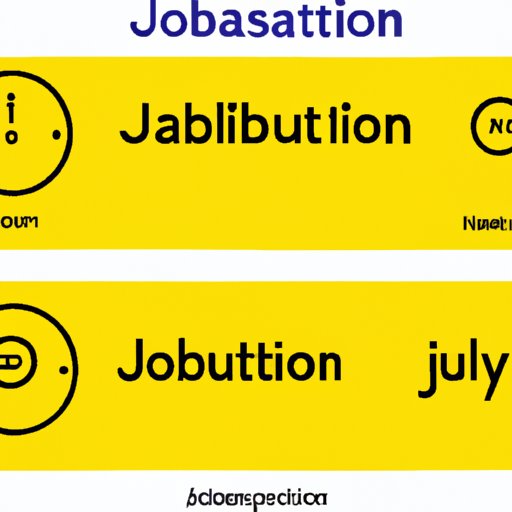Introduction
Goal setting is a powerful tool that can help individuals and organizations reach their desired outcomes. By setting specific, measurable, achievable, relevant, and time-bound (SMART) goals, employees and teams can focus their efforts and optimize their performance. In this article, we’ll explore why it’s important to set goals at work and how doing so can benefit both individual employees and the organization as a whole.

Highlighting the Benefits of Setting Goals at Work
When done correctly, goal setting can result in improved efficiency, increased job satisfaction, and enhanced teamwork and collaboration. Let’s take a look at each of these benefits in more detail.
Improved Productivity and Efficiency
Goals provide an essential roadmap for employees and teams to follow. By clearly defining what needs to be accomplished and when, everyone involved can stay focused and work together to complete tasks in a timely manner. Setting SMART goals helps ensure that all objectives are realistic and achievable, which further increases productivity and efficiency.
Increased Job Satisfaction
Having clearly defined objectives is also beneficial for individual employees. Achieving goals provides a sense of accomplishment and can increase job satisfaction. When employees feel valued and appreciated for their contributions, morale boosts and job satisfaction improves.
Enhanced Teamwork and Collaboration
By setting team goals, colleagues can work together to achieve a common purpose. This creates a sense of unity and encourages collaboration. Additionally, sharing progress updates and celebrating successes together can strengthen the bond between team members.
How Goal Setting Helps Increase Productivity and Efficiency
SMART goals are an effective way to maximize productivity and efficiency. SMART stands for Specific, Measurable, Achievable, Relevant, and Time-Bound. When setting goals, it’s important to make sure they meet each of these criteria. Let’s take a closer look at each one.
Developing SMART Goals
Specific: Goals should be clear and concise. Avoid general statements and focus on specifics. For example, instead of saying “increase sales,” say “increase sales by 10%.”
Measurable: Include a way to measure progress. This will enable you to track your progress and adjust your strategy if necessary. For example, instead of saying “improve customer service,” say “respond to customer inquiries within 24 hours.”
Achievable: Make sure your goals are realistic. Unrealistic goals can lead to frustration and demotivation. For example, instead of saying “double sales in one month,” say “increase sales by 10% in one month.”
Relevant: Make sure your goals align with the overall mission and vision of the organization. For example, instead of saying “win a Nobel Prize,” say “publish 5 research papers in top journals.”
Time-Bound: Include a timeline for completing each goal. This will help you stay focused and motivated. For example, instead of saying “launch new product,” say “launch new product by end of Q3.”
Utilizing Resources to Achieve Goals
Once you’ve identified your goals, it’s important to utilize the resources available to you to achieve them. This may include delegating tasks, seeking advice from colleagues, or attending training sessions. Having a plan in place will help you stay organized and on track.

Exploring the Relationship Between Goals and Job Satisfaction
Setting personal goals is an important part of job satisfaction. Establishing goals gives employees a sense of purpose and direction. It also provides an opportunity to challenge themselves and develop new skills. In addition, rewarding achievements can further boost morale and job satisfaction.
Leveraging Goal Setting to Enhance Teamwork and Collaboration
Sharing goals with team members is a great way to foster collaboration and teamwork. By identifying shared goals, everyone can work together to find creative solutions and develop strategies for achieving them. Additionally, celebrating successes together further strengthens the bond between team members.

Examining the Impact of Goals on Professional Development
Finally, goal setting can be beneficial for professional development. By measuring performance, employees can identify areas of strength and weakness and make adjustments accordingly. Setting goals also increases self-awareness, allowing employees to become more mindful of their actions and decisions.
Conclusion
In conclusion, goal setting can have a positive impact on employee performance, job satisfaction, and team collaboration. By setting specific, measurable, achievable, relevant, and time-bound (SMART) goals, employees and teams can focus their efforts and optimize their performance. Additionally, setting goals allows individuals to challenge themselves and develop new skills. Finally, sharing goals with team members fosters collaboration and enhances teamwork. We hope this article has provided insight into the benefits of goal setting and outlined strategies for achieving goals in the workplace.
(Note: Is this article not meeting your expectations? Do you have knowledge or insights to share? Unlock new opportunities and expand your reach by joining our authors team. Click Registration to join us and share your expertise with our readers.)
